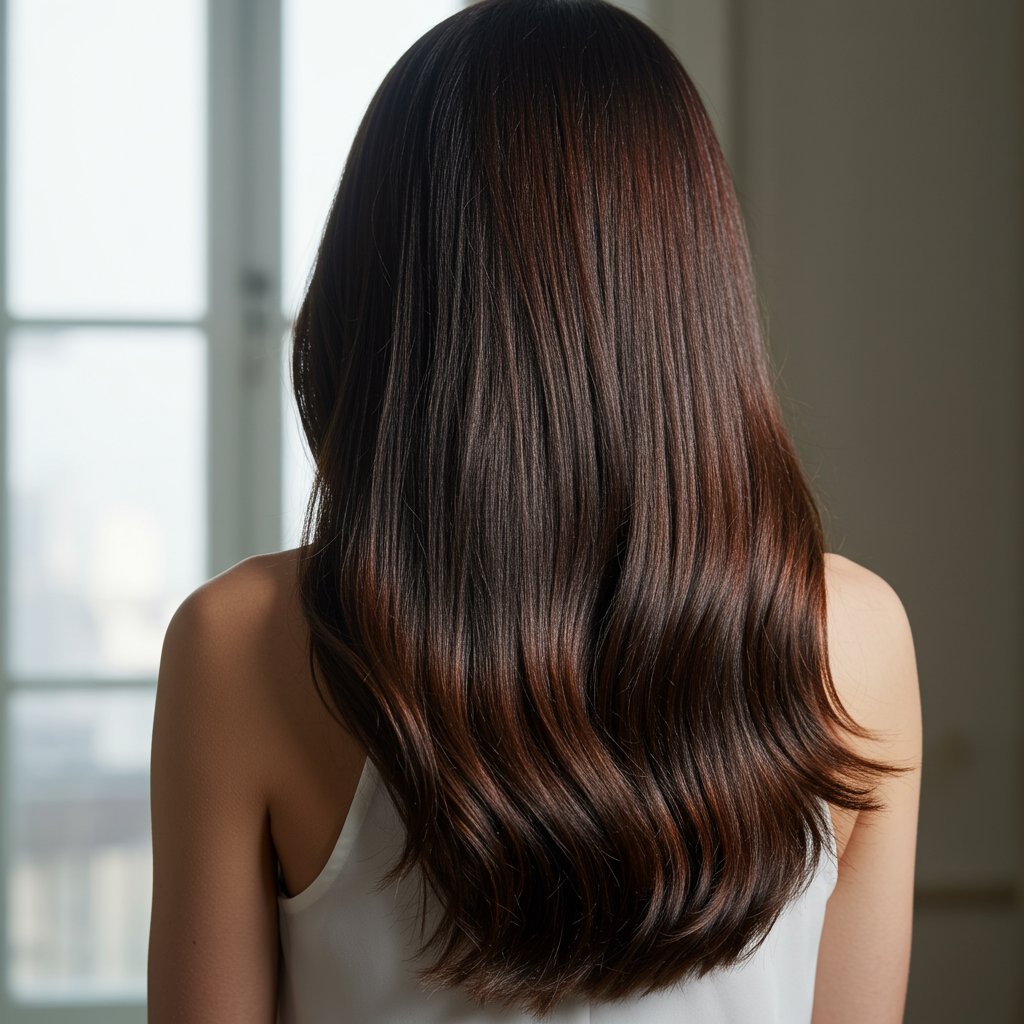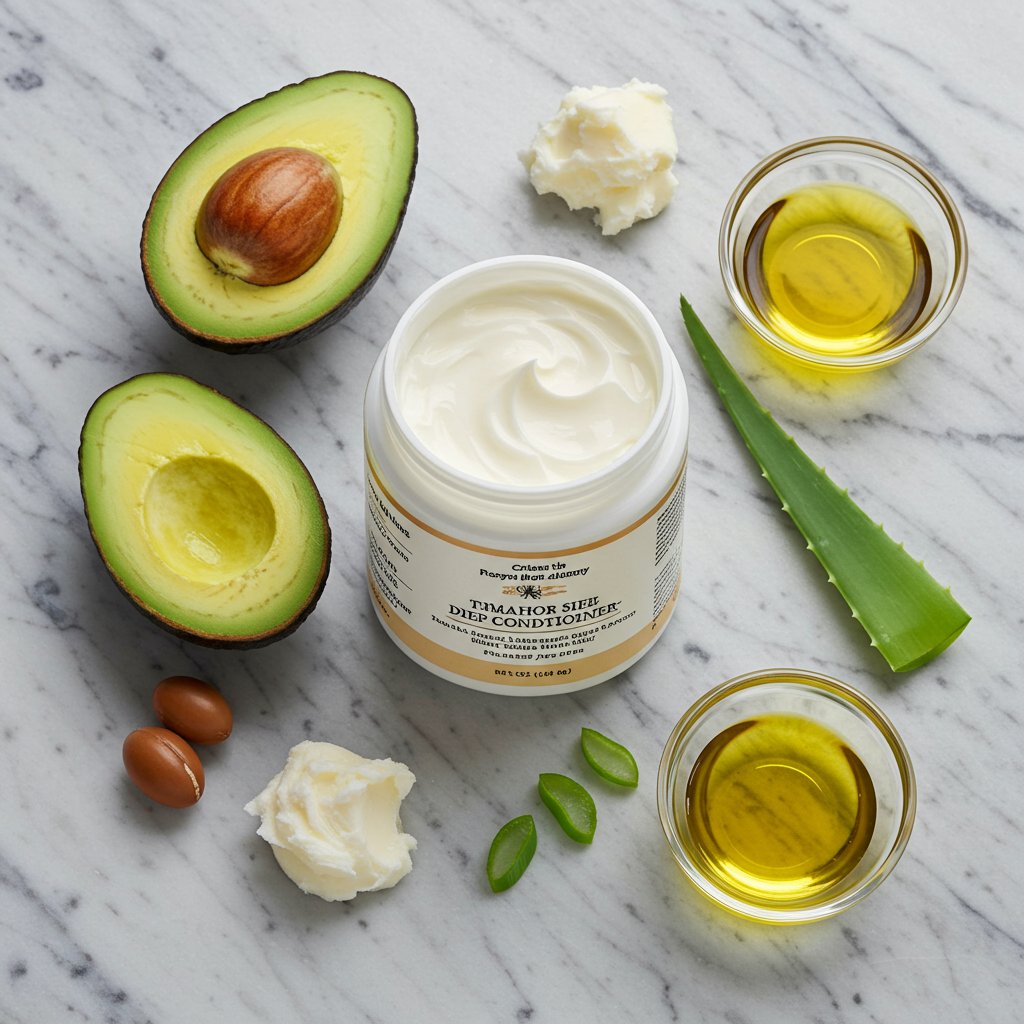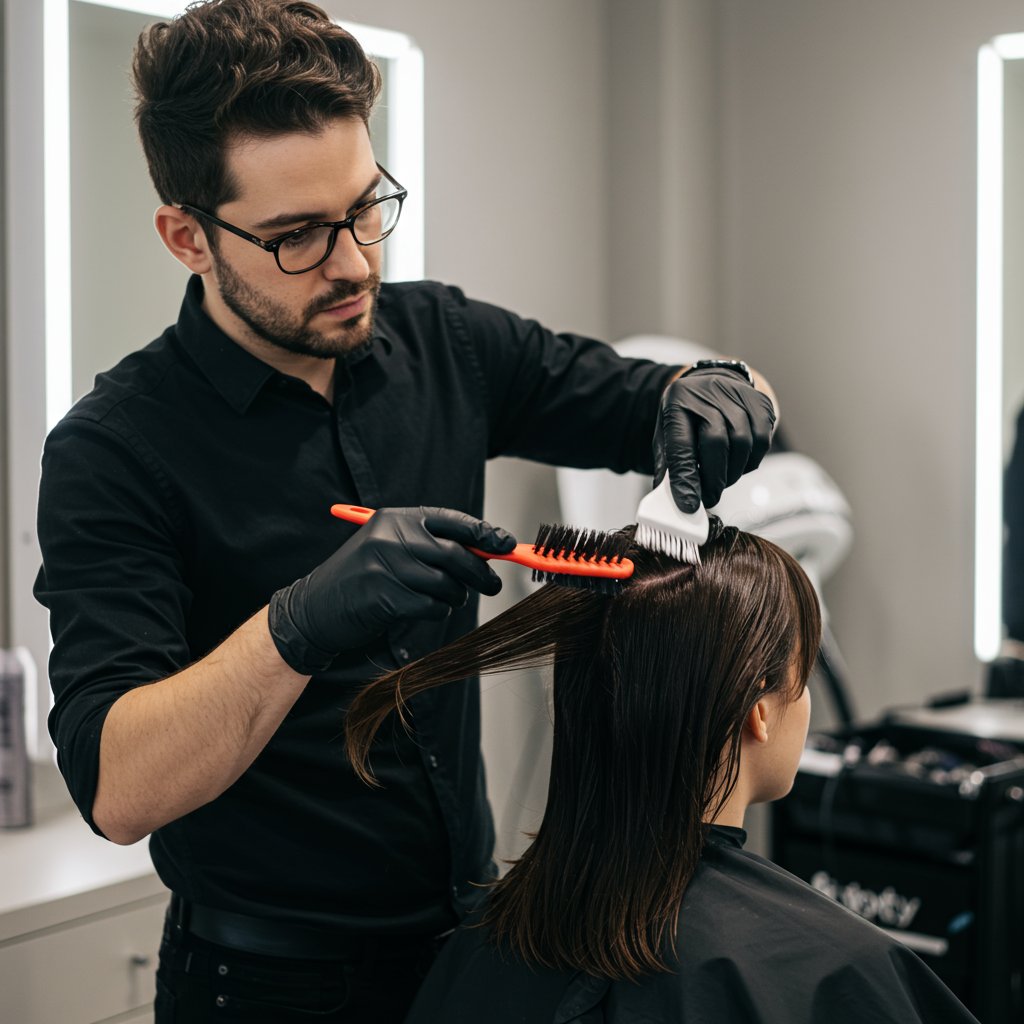Deep Conditioning 101: Your Ultimate Guide to Reviving Dry and Damaged Hair
Your Hair's Lifeline: An Introduction to Deep Conditioning
Is your hair feeling tired, brittle, and lifeless? Do split ends, frizz, and a dull appearance seem to be your constant companions? You're not alone. Daily styling, environmental stressors, chemical treatments, and even diet can take a toll on our hair, leaving it dry, damaged, and desperate for hydration. While regular conditioners provide a temporary surface-level softness, they often don't penetrate the hair shaft deeply enough to enact real, lasting change. This is where the transformative power of deep conditioning comes into play. Think of it as an intensive care unit for your tresses—a concentrated, restorative treatment designed to infuse your hair with the moisture, protein, and nutrients it craves.

This comprehensive guide, "Deep Conditioning 101," is your ultimate resource for understanding and mastering this essential hair care ritual. We will delve into the science behind how these powerful treatments work, help you identify the specific signs of damage your hair is showing, and break down the hero ingredients that can bring it back from the brink. Whether you're a seasoned beauty enthusiast or just beginning your healthy hair journey, this guide will equip you with the knowledge to select the right products, perfect your application technique, and ultimately revive your dry, damaged hair, restoring its natural brilliance, strength, and vitality. Prepare to transform your hair from stressed to blessed.
What is Deep Conditioning and Why is it Essential?
To understand the magic of deep conditioning, we must first distinguish it from its daily counterpart, the rinse-out conditioner. A regular conditioner works primarily on the cuticle, the outermost layer of the hair shaft. Its job is to smooth the cuticle scales, reduce friction, and make detangling easier after shampooing. While essential for daily manageability, its effects are often superficial and temporary. A deep conditioner, on the other hand, is formulated with smaller molecules and a more potent concentration of restorative ingredients designed to penetrate beyond the cuticle and into the hair's cortex. This is where the structural integrity and moisture balance of your hair are determined.

This deeper penetration is what makes deep conditioning so crucial for hair health, especially for hair that is dry or damaged. When hair is damaged, the protective cuticle layer is lifted or chipped, leaving the inner cortex exposed and vulnerable to moisture loss and further breakage. A deep conditioning treatment works to fill in these gaps, replenishing lost lipids and proteins, and intensely rehydrating the hair from within. This process not only repairs existing damage but also fortifies the hair against future stressors. By incorporating regular deep conditioning into your routine, you are proactively investing in your hair's long-term health, ensuring it remains resilient, elastic, and luminous.
Think of your hair like a delicate fabric. Daily wear and tear can cause it to fray and weaken. A regular conditioner is like a quick ironing, smoothing the surface for a better appearance. A deep conditioner is like sending that fabric to a specialist for re-weaving and restoration. It rebuilds the core structure, making the entire fabric stronger, softer, and more durable. This fundamental repair process is why deep conditioning is not just a luxury, but an absolute necessity for anyone looking to achieve and maintain genuinely healthy, beautiful hair.
Identifying Your Hair's Cry for Help: Signs of Damage
Before you can effectively treat your hair, you need to learn to read its signals. Damaged hair doesn't happen overnight; it communicates its distress through various signs and symptoms. Recognizing these early warnings is the first step toward targeted repair. The most common culprit is a lack of moisture, leading to dryness that manifests as a rough, straw-like texture and a noticeable absence of shine. Your hair may also become incredibly difficult to manage, tangling easily and feeling coarse to the touch.

Here's a closer look at the key indicators that your hair is in need of an intensive deep conditioning intervention:
Split Ends and Breakage
Take a close look at the ends of your hair. Do you see a single strand splitting into two or more? These are split ends (trichoptilosis), a clear sign the hair cuticle is severely damaged. This often leads to breakage, where you find short, snapped pieces of hair on your clothes or in your brush. Excessive breakage indicates a loss of elasticity and protein structure within the hair shaft.Unmanageable Frizz and Flyaways
A halo of frizz is a direct result of a raised, open cuticle layer. When the cuticle is not lying flat, it allows moisture from the air to enter the hair shaft, causing it to swell and appear frizzy. While some hair types are naturally more prone to frizz, a sudden increase in unruly flyaways is a strong indicator that your hair is dehydrated and its protective barrier is compromised.Dullness and Lack of Shine
Healthy hair has a smooth, tightly sealed cuticle that reflects light, giving it a natural, glossy sheen. Damaged hair, with its rough and uneven cuticle surface, scatters light instead of reflecting it. This results in a dull, lackluster appearance, no matter how much you wash or style it. If your hair has lost its natural vibrancy, it's a sign that it's starving for the nourishing ingredients found in a deep conditioner.The Anatomy of a Deep Conditioner: Key Ingredients to Look For
Navigating the world of hair products can be overwhelming, with ingredient lists that often read like a chemistry textbook. However, understanding a few key components can empower you to choose a deep conditioner that will deliver real results. A high-quality treatment is a carefully balanced cocktail of ingredients designed to moisturize, strengthen, and protect. These ingredients typically fall into a few main categories, each serving a unique and vital purpose in the hair revival process.

The most effective deep conditioners blend ingredients from these different categories to provide comprehensive care. For instance, a formula might combine shea butter (emollient) with glycerin (humectant) and hydrolyzed keratin (protein) to moisturize, attract water, and rebuild the hair's structure simultaneously. When shopping, look for products where these powerhouse ingredients are listed near the top of the ingredients list, indicating a higher concentration.
Moisturizers: Humectants and Emollients
- Humectants: These are moisture magnets. Ingredients like glycerin, hyaluronic acid, panthenol (pro-vitamin B5), and aloe vera draw water from the environment into the hair shaft, providing a deep surge of hydration. They are essential for combating dryness and restoring plumpness to dehydrated strands.
- Emollients: These are the sealants. Ingredients like shea butter, coconut oil, avocado oil, and argan oil are rich in fatty acids that create a protective barrier on the hair's surface. This barrier smooths the cuticle, locks in the moisture provided by humectants, and imparts a soft, silky feel.
Strengtheners: Proteins and Amino Acids
- Proteins: Hair is primarily made of a protein called keratin. When hair is damaged, it loses this protein, becoming weak and brittle. Deep conditioners often contain hydrolyzed proteins (like keratin, silk, or wheat protein) that have been broken down into smaller molecules. These can penetrate the hair shaft to patch up weak spots, rebuild its internal structure, and improve elasticity.
- Ceramides: These are lipid molecules that act as the 'glue' holding the hair cuticle together. Fortifying your hair with ceramides helps to flatten the cuticle, increase shine, and protect the hair's inner layers from damage.
How to Deep Condition Like a Pro: A Step-by-Step Guide
Achieving salon-worthy results at home is entirely possible with the right technique. Simply slathering on a product and rinsing it out won't unlock its full potential. The key is in the preparation, application, and processing. Following a structured routine ensures that the product is evenly distributed and has ample time to penetrate the hair shaft deeply for maximum impact.

Start by preparing your canvas. Deep conditioners work best on clean, damp hair. Shampoo your hair thoroughly, focusing on the scalp to remove any product buildup, dirt, or oil that could prevent the treatment from absorbing properly. Gently squeeze out excess water with your hands or a microfiber towel. You want your hair to be damp, not sopping wet, as too much water can dilute the product. Detangle your hair with a wide-tooth comb before application to ensure every strand gets coated.
The Application Process
- Section Your Hair: Divide your damp hair into 4-6 manageable sections. This makes it easier to apply the product evenly and ensures no strand is left behind.
- Apply Generously: Starting with one section, scoop a generous amount of deep conditioner. Emulsify it between your palms and apply it from the mid-lengths to the ends, as this is typically the oldest and most damaged part of your hair. Work your way up, but avoid applying too much directly to the scalp if you have fine or oily hair.
- Focus on Distribution: Use your fingers to rake the product through each section. Once applied, use a wide-tooth comb to gently comb through again, guaranteeing every single strand is saturated.
- Let It Penetrate: Twist each section up and secure it with a clip. Cover your hair with a plastic shower cap. This traps the heat from your scalp, which helps to open up the hair cuticle and allows the conditioner to penetrate more deeply.
- Add Gentle Heat (Optional but Recommended): For an extra boost, wrap a warm, damp towel around the shower cap or use a blow dryer on a low heat setting to warm the cap for a few minutes. This further enhances absorption.
- Time it Right: Let the treatment sit for the recommended time on the product's packaging, typically between 20-30 minutes. This is the sweet spot for maximum absorption without causing over-softening.
- Rinse Thoroughly: Rinse the deep conditioner out completely using cool or lukewarm water. The cool water helps to seal the hair cuticle, locking in all the nourishing ingredients and boosting shine.
Choosing the Right Deep Conditioner for Your Hair Type
Not all deep conditioners are created equal, and what works wonders for one person might weigh down another's hair. The secret to success is selecting a formula tailored to your specific hair type and concerns. Understanding your hair's texture (fine, medium, coarse) and porosity (its ability to absorb and retain moisture) is crucial in making the right choice.

A common mistake is assuming that all damaged hair needs a heavy, protein-rich treatment. While protein is essential for rebuilding strength, an overload can lead to 'protein sensitivity,' making the hair feel stiff and brittle. It's about balance. Listen to your hair: if it feels overly soft and mushy, it may need more protein. If it feels rough and straw-like, it's likely craving moisture. Many people benefit from alternating between a moisture-focused mask and a protein-based treatment to give their hair everything it needs.
For Fine or Low-Porosity Hair
If your hair is easily weighed down, look for lightweight formulas. Avoid heavy butters and oils like shea butter or castor oil in high concentrations. Instead, opt for products with ingredients like aloe vera, glycerin, and lighter oils such as argan or grapeseed oil. You may also benefit from treatments with a lower protein content to avoid stiffness. A shorter processing time (10-15 minutes) is often sufficient.For Thick, Coarse, or High-Porosity Hair
This hair type is often very dry and can handle richer, more emollient-heavy formulas. Look for deep conditioners with shea butter, mango butter, avocado oil, and olive oil listed prominently. Your hair will drink up these nourishing ingredients. Protein treatments are also generally well-tolerated and necessary to fill in the gaps in the porous cuticle layer.For Curly and Coily Hair
Curls and coils are naturally drier than straight hair because the scalp's natural oils have a harder time traveling down the twists and turns of the hair shaft. Moisture is paramount. Seek out creamy, dense masks packed with humectants and emollients. Ingredients like coconut cream, shea butter, and hyaluronic acid are fantastic for replenishing lost moisture and enhancing curl definition.For Color-Treated or Chemically Processed Hair
Coloring, bleaching, and relaxing services compromise the hair's structural integrity, making it weak and porous. This hair type needs a balance of both moisture and protein. Look for treatments specifically labeled as 'repairing' or 'restructuring.' They often contain hydrolyzed keratin or silk proteins to rebuild broken bonds, alongside rich moisturizing agents to combat the dryness caused by chemical processing.When to See a Professional: In-Salon Deep Conditioning Treatments
While at-home deep conditioning is a cornerstone of a healthy hair regimen, there are times when your hair needs a level of care that can only be achieved in a professional salon setting. In-salon treatments offer a significant advantage due to the use of professional-grade products with higher concentrations of active ingredients, advanced application techniques, and specialized equipment that you simply don't have access to at home.

An experienced stylist can provide a thorough hair and scalp analysis, accurately diagnosing the specific needs of your hair. They can identify if your hair is lacking moisture, protein, or a combination of both, and then custom-blend a treatment or select a specific professional product line to address those exact issues. This removes the guesswork and ensures your hair receives the most effective therapy. Furthermore, salons utilize tools like professional-grade hair steamers or infrared processors. These devices use moist heat to gently and evenly lift the hair cuticle, allowing the treatment to penetrate far more deeply into the cortex than a shower cap and body heat ever could. This results in more intense, immediate, and longer-lasting hydration and repair.
Consider booking a professional deep conditioning treatment after any chemical service like coloring, bleaching, or straightening to immediately restore the hair's pH balance and begin the repair process. It's also a fantastic seasonal ritual, especially after summer exposure to sun, salt, and chlorine, or during winter when the cold air and indoor heating can leave hair exceptionally parched. If your hair feels persistently damaged despite your best at-home efforts, or if you're preparing your hair for a major event, a professional treatment can provide that dramatic, revitalizing boost that makes all the difference.
Frequently Asked Questions (FAQ) About Deep Conditioning
How often should I deep condition my hair?
For most hair types, a weekly deep conditioning session is ideal for maintenance. However, if your hair is severely damaged or very dry, you can increase the frequency to twice a week. Conversely, if you have very fine hair, you might find that once every two weeks is sufficient to avoid weighing it down. Pay attention to how your hair feels and adjust accordingly.
Can I leave a deep conditioner on overnight?
It's generally not recommended. Deep conditioners are formulated with a specific pH to work within a 20-30 minute timeframe. Leaving them on for hours can lead to 'hygral fatigue,' where the hair shaft swells excessively with water, weakening the cuticle over time and potentially causing more damage. Stick to the instructions on the package for the best and safest results.What's the difference between a hair mask and a deep conditioner?
The terms are often used interchangeably in marketing, but traditionally, a 'hair mask' implies a thicker, more concentrated treatment focused on a specific issue (e.g., a clay mask for detoxing or a protein mask for repair), while 'deep conditioner' is a more general term for an intensive moisturizing treatment. In practice, look at the ingredients and description rather than just the name to determine the product's primary function.Can deep conditioning cause product buildup?
Yes, it can, especially if you use very heavy, oil-based products frequently or if you don't rinse thoroughly. To prevent this, always rinse with lukewarm water until your hair feels clean and no longer slippery. Incorporating a clarifying shampoo into your routine once or twice a month will also help remove any residual buildup and give your hair a fresh start.Will deep conditioning weigh down my fine hair?
It can if you use the wrong product or apply it incorrectly. For fine hair, choose a lightweight formula and focus the application on the mid-lengths and ends, avoiding the root area. Ensure you rinse the product out completely. A properly chosen and applied deep conditioner should leave fine hair feeling soft and bouncy, not heavy or greasy.Conclusion: Embrace the Ritual, Love Your Hair
Deep conditioning is more than just another step in a routine; it's a transformative ritual of self-care that pays visible dividends. By dedicating just 30 minutes a week, you provide your hair with the intensive nourishment it needs to combat the stresses of daily life. Understanding the signs of damage, knowing which ingredients to seek out, and mastering the application technique are the keys to unlocking your hair's true potential.
Remember that consistency is crucial. The journey from dry, damaged hair to strong, vibrant locks is a marathon, not a sprint. Each treatment builds upon the last, progressively restoring your hair's health, elasticity, and shine. Whether you're reviving your strands at home or entrusting them to the care of a professional for a more intensive treatment, you are making a powerful investment in your hair's future. Embrace this essential practice, and watch as your hair transforms, reflecting the health and vitality you've so carefully nurtured within.


